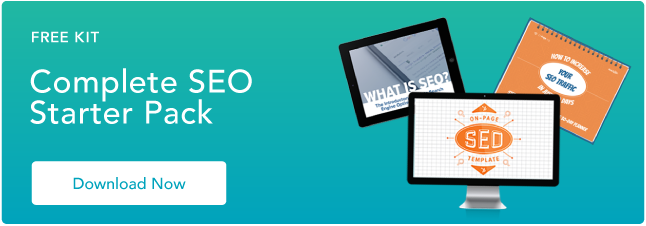Inbound links are the unsung hero of successful inbound marketing. They help increase traffic, improve SEO , and -- if included in an article by a major news source -- can be a great public relations win.
But what is an inbound link? In plain English, an inbound link is a link from one website to another website. For example, this is an inbound link to CNN.com . The inbound description is generally used by the person receiving the link. So CNN might say, "I received an inbound link from HubSpot." (And you're welcome, CNN. We'd love an inbound link or two from you!)
So why do you need inbound links? Two reasons. First, it's an opportunity to receive referral traffic from another website. An inbound link from a blog is an avenue for that blog's readers to visit you. But depending on the amount of traffic that blog or website receives, the link may send a low volume of traffic.
But there's something even better with more long-term benefits that inbound links are good for -- SEO ! So how does that work?

Inbound links are the "currency" of the internet, and a website rich with inbound links will naturally rank better in search engines . Great! So should you haphazardly link to yourself in random directories, plead to your grandma to link to you from her cat photo blog, and call it a day?
No. All inbound links are not treated equally. Instead, you should focus on getting good, healthy inbound links from authoritative sources. In the HubSpot software , there's a Link Grader tool that tells customers when they receive a new inbound link and awards that link a grade based on how valuable it is.
So what does a good inbound link look like?
Good question! There are three primary qualities that define the quality and stregnth of an inbound link:
1. Comes from an authoritative website. Sorry folks, your grandmother's cat blog is wonderful, but will not pass as much authority over to you as a site like say, CNN.
2. Uses anchortext. Anchortext is the text that "holds" the link. For example, you can link to another site by either writing the URL, or using anchortext ( www.cnn.com or CNN , respectively).
3. Has descriptive anchortext. The reason we like anchortext in point #2 is because it gives the linker the opportunity to describe the linked-to site in the link itself. This is great for the person who is receiving the link, because now search engines will have more information about his or her site. For example, I'm sure CNN would prefer the anchor text global news in order for search engines to rank CNN a little better for the term "global news." We at HubSpot love the anchortext marketing software .
Do you pay close attention to your links? What strategies do you use to earn healthy inbound links from authoritative sources?








![How to Find & Add Nofollow Links to Your Website [Step by Step]](https://blog.hubspot.com/hubfs/how-to-add-nofollow-links.jpg)

